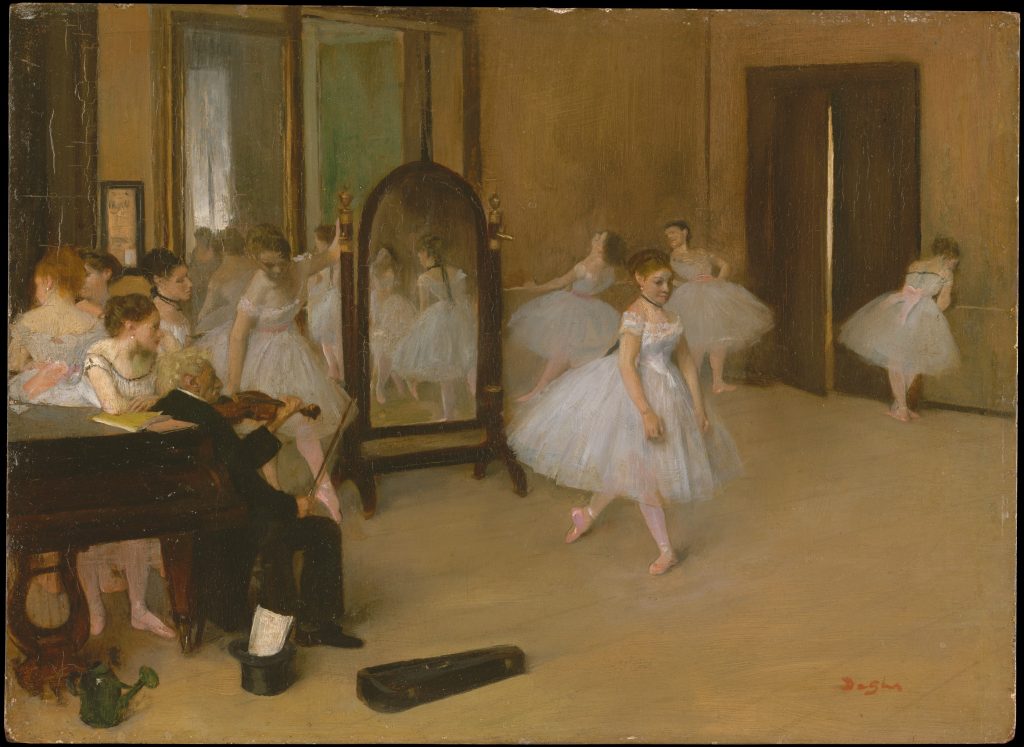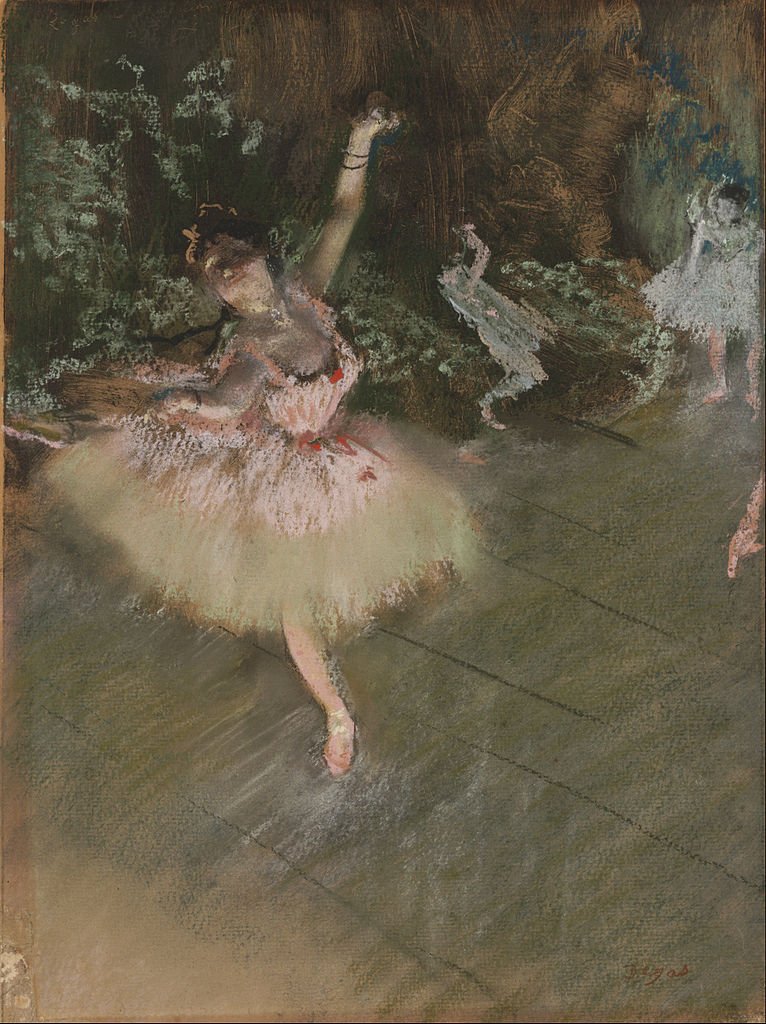Edgar Degas – Impressionist or not impressionist?? Do Edgar Degas’ paintings belong to the impressionism movement?
The 19th-century French artist Edgar Degas’ is mainly known for his ballerina paintings. Did you know that he was also sculptor, printer and draftsman?
Edgar Degas was not only a thorough Frenchman but also a thorough Parisian. He was born in Paris on July 19, 1834. Degas also lived in Paris his entire life, and in Montmartre for the greater part of it.
When Degas died in 1917, he was buried in the Montmartre Cemetery, a tranquil and interesting place worthy of a visit when in Paris.

Degas invented new techniques for drawing and painting his favorite subject matter, young ballerina dancers .
No one had ever attempted to visually capture body movements and bodies in motion before.
Degas also revived pastel as an art material.

Edgar Degas [Public domain], via Wikimedia Commons
Edgar Degas regularly went to the Paris opera house, not only as a member of the audience, but as a visitor backstage and in the dance studio. From the 1870s until his death, Degas’s favorite subjects for his paintings were ballerinas.
He painted the Ballerinas at work, in rehearsal or at rest, and tirelessly explored the theme with many variations in posture and gesture.
More than the stage performance and the limelight, he was intrigued by the training and rehearsals for his paintings.

Edgar Degas [Public domain], via Wikimedia Commons
Though Degas is one of the founders of Impressionism art, he quite disliked the name. He also disliked many of the impressionist artists who were in the movement.
He considered himself as a realist first and foremost.
Was he an impressionist?
However, he continued to lead the impressionist collective and co-organize their groundbreaking impressionist exhibitions in Paris from 1874-86.
Degas also participated in 7 out of 8 impressionist exhibitions that were held. In addition, he also invited his friends to participate, like the American Mary Cassatt.
Degas sneered at the idea of painting outdoors (plein-air painting), further insulting Monet and the other landscape painters in the group.

Edgar Degas [Public domain], via Wikimedia Commons
When he grew older, his eyesight started to degenerate. Degas turned increasingly to sculpture, modeling figures and horses in wax. These sculptures remained in his studio in disrepair and were cast in bronze only after his death.
As an artist, there is much to love but as a man, Degas was unlikable, cynical, misogynistic and argumentative.
Degas once said, “I want people to believe me wicked,”
Indeed he died alone, unmarried and childless.
Auguste-Pierre Renoir said of Degas: “What a creature he was, that Degas! All his friends had to leave him; I was one of the last to go, but even I couldn’t stay until the end.”
In terms of an artistic legacy, Edgar Degas’ paintings are hung in practically every major museum in the world. His paintings and other artworks are famous worldwide and loved by so many.
If you are in Paris, there are three amazing museums to view Edgar Degas’ paintings and other artworks.
- Musee D’Orsay
- L’Orangerie museum
- Marmotten Museum.
- Le Havre Museum – Muma (a day trip from Paris)
A good historical fiction book about Degas?
If you are a bookworm and love historical fiction, I recommend one fabulous novel about Edgar Degas called The Painted Girls by Cathy Marie Buchanan. Press here for my review.

Edgar Degas [Public domain], via Wikimedia Commons








Let's hear your comments!